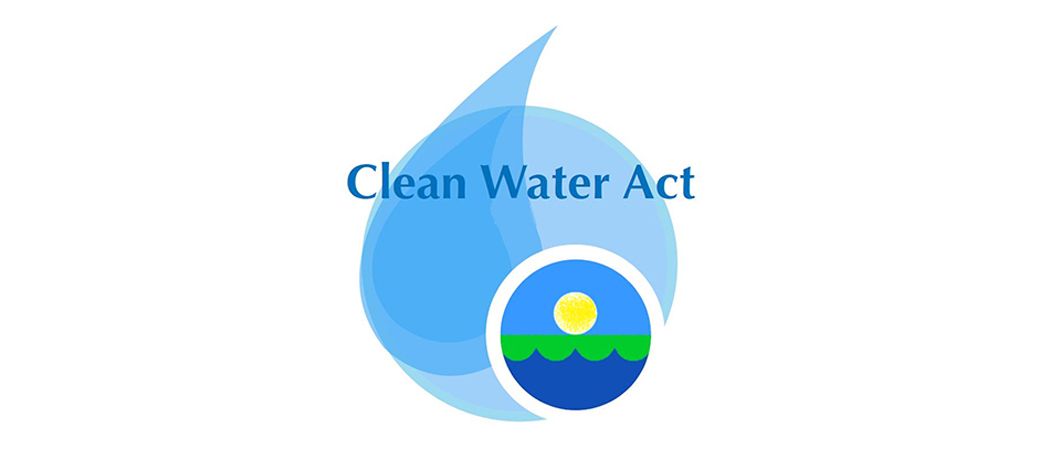The Clean Water Act: Legal Basis & Intent
Legal Basis of the Clean Water Act:
Like every law of the land, the Clean Water Act (CWA) finds its legal basis in the United States Constitution. The Commerce Clause, Article I, Section 8 of the Constitution grants Congress the power to regulate intra and interstate commerce. Article I, Section 8 also grants Congress the power to “make all Laws which shall be necessary and proper”. Regulation of commerce includes means of navigation for the transport of goods; all forms of surface waters including rivers, creeks and streams are included under the term “navigable waters”. The commerce clause has been the backbone of many environmental laws including the Clean Air Act (CAA) and the Clean Water Act.
The Clean Water Act took shape from the failed policies of the 1965 Water Quality Act which focused on industrial water pollution, and relied almost entirely on the states to improve water quality. The Clean Water Act was passed in 1972 with bipartisan efforts. Congress included the provisions for the “protection and propagation of fish, shellfish and wildlife”. The combination of waters used for navigation and for propagation strengthen the support of the Clean Water Act’s basis in Constitutional Law. Challenges to the Clean Water Act have been made in various levels of court; to date no judge, including Supreme Court Justices, has found the Clean Water Act to be unconstitutional.
The Public Trust Doctrine, which originated in ancient Rome, also strengthens the Clean Water Act legally. The Public Trust Doctrine from Roman times essentially states that the sea, seashores, running water and air are all rights of the public and should be protected and available for public or common use. The Public Trust Doctrine has been a legal aspect of many nations. Great Britain's Magna Carta includes clauses for public rights which had been strengthened from the times of Roman Emperor Justinian.
Public Trust Doctrine became part of United States common law when it was invoked in the case of Illinois Central Railroad v. Illinois in 1869. Illinois granted 1,000 acres on the Lake Michigan shores to the Illinois Central Railroad for development. Four years later the state decided to reverse its grant and took the Railroad to court. The Supreme Court ruled in favor of the State, saying that navigable waterways are “different in character” from other public lands and should be held in trust for the people so that “they may enjoy the navigation of the waters, carry on commerce over them and have liberty of fishing therein freed from the obstruction or interference of private parties”. Rulings in Marks v. Whitney strengthened and expanded the Public Trust Doctrine to include tidelands are subject to public trust and any member of the public can bring a public trust lawsuit forward. Perhaps most importantly, the California Supreme Court found that the purpose of public trust should be “sufficiently flexible to encompass changing public needs”.
The Clean Water Act extends wetlands protection beyond what would be traditionally deemed as navigable waters. In Natural Resources Defense Council, Inc. v. Callaway district courts ruled that Congress intended to utilize the Commerce Clause to its fullest extent. In response, The Army Corp of Engineers, who is responsible for permitting, claimed jurisdiction over “wetlands, sloughs, prairie potholes, wet meadows, playa lakes, or natural ponds” because their use could affect “navigable waters”.
The Public Trust Doctrine and the United States Constitution form the legal foundation of the Clean Air Act. Subsequent court rulings have helped to expand the reach of the Clean Water Act.
Intent:
The Clean Water Act was passed during a time in American politics when environmental issues were prominent. President Richard Nixon signed an executive order on Dec. 2, 1970 establishing the Environmental Protection Agency (EPA). Shortly after the creation of the EPA, the nation's air pollution problem was addressed in the Clean Air Act. Tackling the nation's heavily polluted waterways was next on the Congressional agenda. The severity of water pollution problem was highlighted when the Cuyahoga River caught on fire in 1969. Dr. Seuss addressed water quality in his famous children’s book, The Lorax, after Lake Erie had been proclaimed dead. The discharge of sewage and waste directly into waterways had been commonplace, but as population increased so did the amount and concentration of waste deposited.
It was the intent of Congress to eliminate the discharge of all pollutants into national waterways and to protect those waterways by providing “for the protection and propagation of fish, shellfish and wildlife” and “recreation in and on the water”. The Clean Water Act was to set limits and manage effluent streams from industries, corporation, public treatment facilities and other point source water polluters. The Clean Water Act only applies to point-source sources of pollution. Point-source polluters release effluent directly into a waterway such as the spent water from a power plant cooling tower. Non-point sources of pollution are indirect and include sources such as agricultural or urban runoff; nonpoint sources of pollution are not covered under the CWA. The specific focus of Congress on industrial effluent was in direct response to the rate, volume and content of commercial effluent being released.
Congress designed the CWA so that federal agencies would have the ability to develop, implement and regulate pollutant control levels. This task was specifically assigned to the Environmental Protection Agency.
Congress intended for the EPA to set effluent limits based on available technology and made provisions for technological improvement, knowing that technological advancement and science never stagnate. The Clean Water Act bases limitations of effluent contents and released based on the type of waste being discharged. Toxic waste was originally managed based on human health standards because Congress wanted to protect citizens from toxic drinking water and toxic fish. Conventional and non-conventional sources of pollution were based on technological control capabilities.
